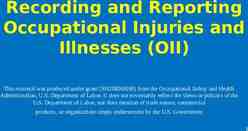Forensic Odontology
10 Slides204.00 KB
Forensic Odontology
What is Forensic Odontology? Forensic Odontology is a branch of forensic medicine which, in the interest of justice, deals with the proper examination, handling and presentation of dental evidence in a court of law.
Forensic Odontologists will often work with forensic pathologists and forensic anthropologists.
So What can an Odontologist discover? ID of bite marks on a victim Comparison of bite marks with the teeth of a suspect and presentation of this evidence in court as an expert witness ID of bite marks on other substances such as wood, leather and foodstuffs ID of unknown bodies through dental records Age estimations of skeletal remains
The physical characteristics of both the bite mark wound and the suspect’s teeth include: The distance from cuspid to cuspid The shape of the mouth arch The evidence of a tooth out of alignment Teeth width and thickness, spacing between teeth Missing teeth The curves of biting edges Unique dentistry Wear patterns such as chips or grinding
How reliable are bite marks in connecting a suspect with a crime? Answer: Horrible!!! Why? Soft tissue will swell or distort and two people can have similar teeth construction. However bite marks can exclude suspects.
How helpful are teeth in identifying human remains? Answer: Excellent!!! Teeth remain very intact even through violent crimes, fires, accidents and advanced decomposition. DNA is also preserved very well in the pulp of a tooth.
Homework Questions 1. What is forensic odontology? 2. What other scientists often work with an forensic odontologist? 3. Give 2 examples of information they can discover. 4. Why aren’t teeth marks reliable evidence? 5. How are teeth helpful for forensic investigations? 6. What is the name of the front row of teeth?















